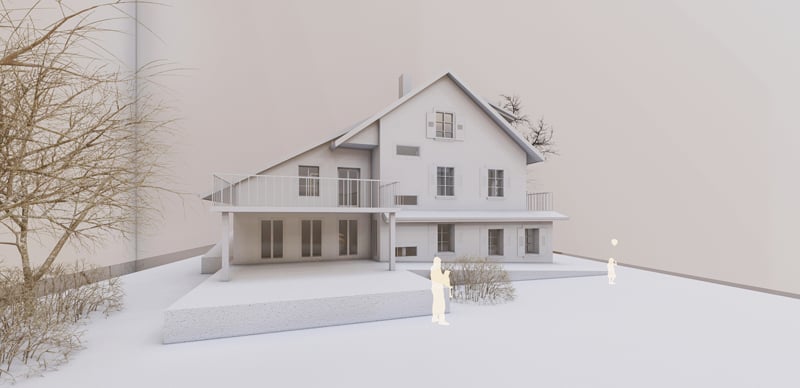In recent years, point cloud technology has emerged as a powerful tool for building design and construction. With the ability to capture detailed 3D data of existing buildings and structures, point cloud technology is transforming the way architects, engineers, and construction professionals approach building design.
One of the key applications of point cloud technology is in building modeling. Building modeling involves creating digital models of existing structures, which can be used for a variety of purposes, including renovation, restoration, and energy efficiency analysis.

Traditionally, building modeling was a time-consuming and labor-intensive process, requiring architects and engineers to manually measure and record the dimensions of existing buildings. With point cloud technology, however, this process has been revolutionized.
Point cloud technology uses laser scanners to capture millions of individual data points, creating a highly detailed 3D model of an existing building. This model can then be imported into a software program such as Revit, which allows architects and engineers to manipulate the data to create accurate digital models of the building.
The benefits of using point cloud technology for building modeling are many. First, the accuracy and level of detail provided by point cloud data is unparalleled. This allows architects and engineers to create highly accurate digital models of existing structures, reducing the likelihood of errors and improving the overall quality of the design.
Second, the use of point cloud data can significantly reduce the amount of time and resources required for building modeling. With traditional methods, architects and engineers would have to spend hours measuring and recording dimensions. With point cloud data, this process is much faster and more accurate, allowing for quicker turnaround times and more efficient project management.

Finally, point cloud technology can also improve the sustainability and energy efficiency of building designs. By accurately modeling existing structures, architects and engineers can identify areas for improvement and make design decisions that will reduce energy consumption and improve the overall sustainability of the building.
In conclusion, point cloud modeling in Revit is changing the game for building design and construction. With its unparalleled accuracy, efficiency, and sustainability benefits, it is quickly becoming a must-have tool for architects, engineers, and construction professionals. As the technology continues to evolve, we can expect to see even more innovative uses for point cloud data in building design and construction.

Transforming Building Design: The Power of Point Cloud Modeling in Revit by Altstudio
As building design and construction continue to evolve, new technologies are emerging that are transforming the way architects and engineers approach design challenges. One of the most powerful of these technologies is point cloud modeling in Revit, a revolutionary tool that is changing the game for building design.
Altstudio is at the forefront of this technology, using point cloud modeling in Revit to create accurate and detailed digital models of existing structures. By leveraging the power of point cloud data, Altstudio is able to provide its clients with unparalleled accuracy, efficiency, and sustainability benefits.
So what exactly is point cloud modeling in Revit? Put simply, it is a process that uses laser scanning technology to capture millions of individual data points of an existing building. This data is then imported into Revit, where it is used to create a highly accurate and detailed digital model of the building.
The benefits of using point cloud modeling in Revit are many. First and foremost, the accuracy and level of detail provided by point cloud data is unmatched by any other method. This allows Altstudio to create highly precise and accurate digital models of existing structures, reducing the likelihood of errors and improving the overall quality of the design.
Secondly, the use of point cloud data significantly reduces the amount of time and resources required for building modeling. With traditional methods, architects and engineers would have to spend hours measuring and recording dimensions. With point cloud data, this process is much faster and more accurate, allowing for quicker turnaround times and more efficient project management.
Finally, point cloud technology can also improve the sustainability and energy efficiency of building designs. By accurately modeling existing structures, architects and engineers can identify areas for improvement and make design decisions that will reduce energy consumption and improve the overall sustainability of the building.
At Altstudio, point cloud modeling in Revit is a core component of our approach to building design. By leveraging the power of this technology, we are able to create highly accurate and detailed digital models of existing structures, allowing us to deliver superior design solutions to our clients.
In conclusion, point cloud modeling in Revit is a game-changing technology that is transforming the building design and construction industry. With its unparalleled accuracy, efficiency, and sustainability benefits, it is quickly becoming a must-have tool for architects, engineers, and construction professionals. And with Altstudio at the forefront of this technology, we are well-positioned to deliver exceptional design solutions to our clients.
